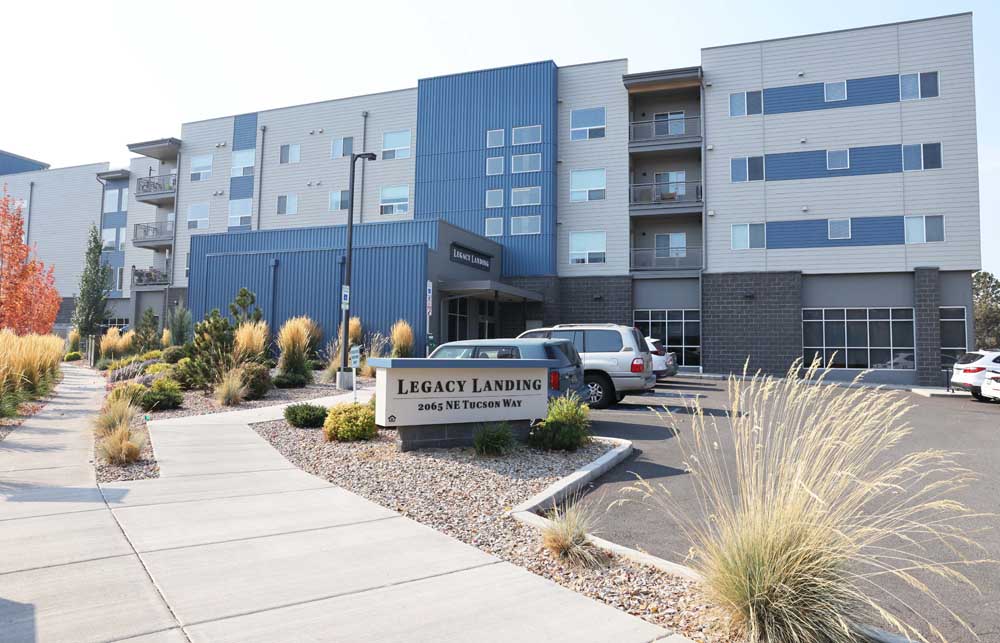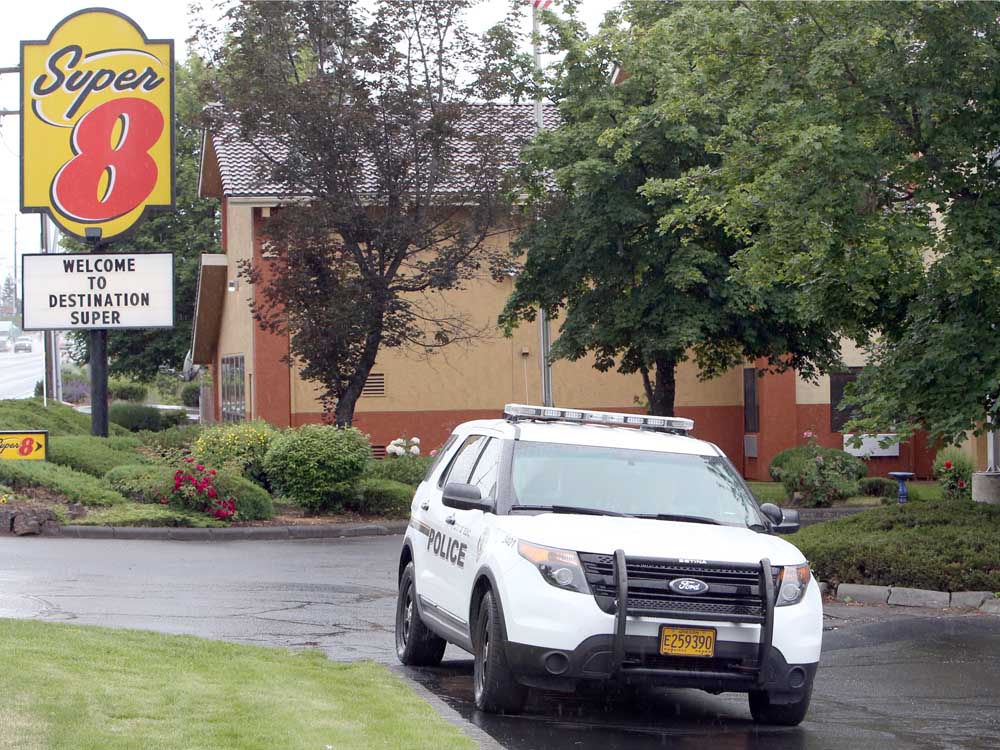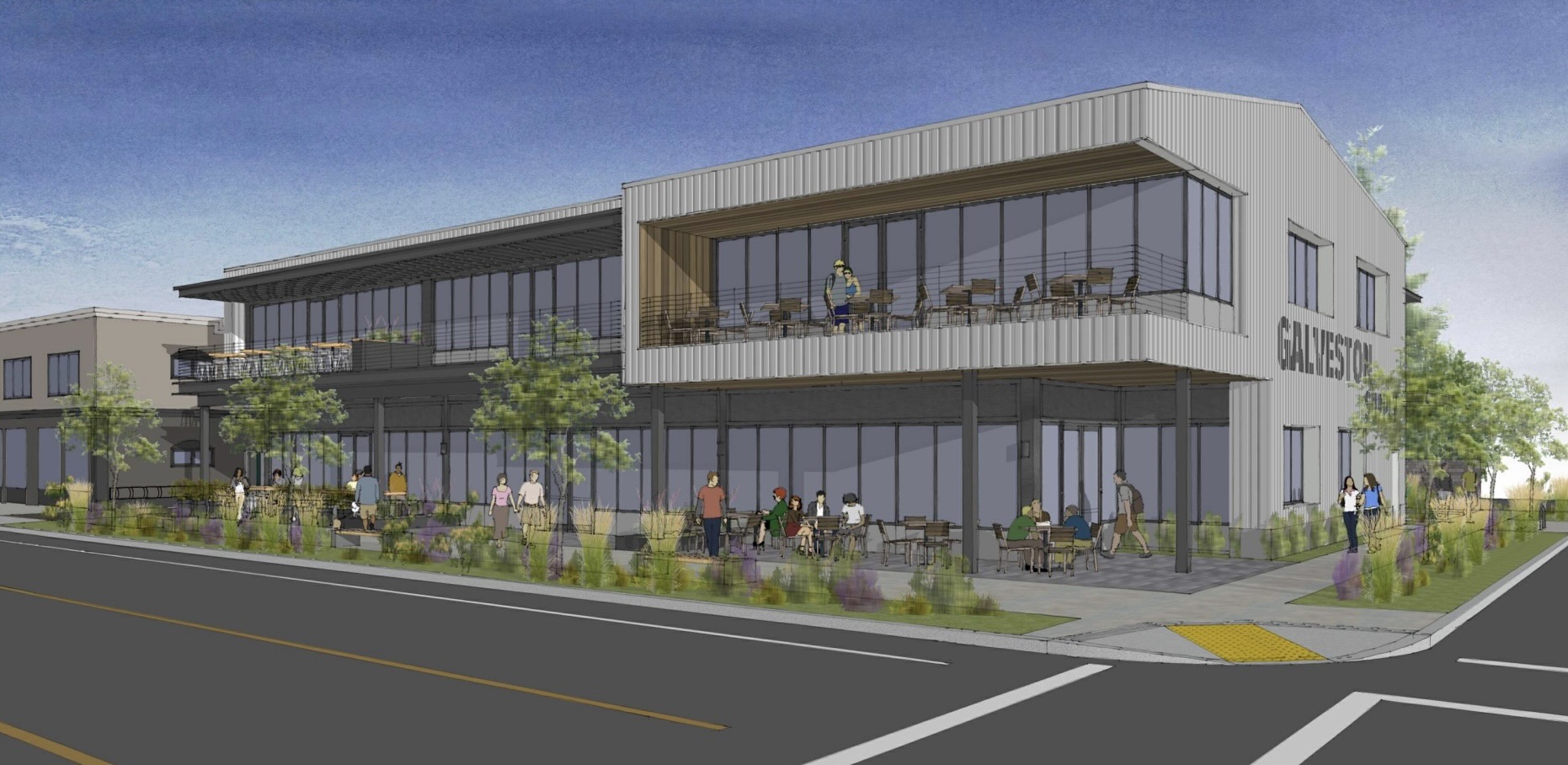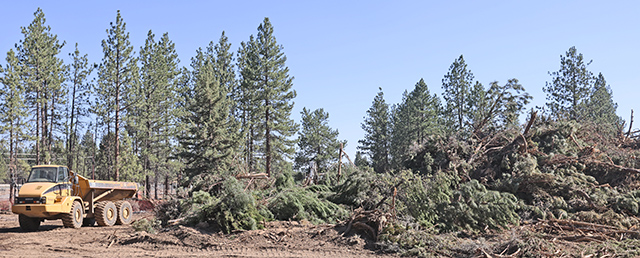Bend code changes to spur affordable housing cause concern over open spaces
Published 5:30 am Thursday, November 14, 2024

- Legacy Landing is an affordable housing multifamily development in northeast Bend.
A set of proposed code changes would align Bend’s development code with state legislation allowing affordable housing outright in nonresidential areas, heightening tension between the city’s need for housing and concern over development of open spaces.
Senate Bill 8, a 2021 law passed by the Legislature, and several subsequent amendments prohibit cities from stopping development of affordable housing as long as it meets certain income thresholds, ownership and location requirements.
Trending
The city’s planning commission passed the slate of changes Oct. 28, and the Bend City Council is scheduled to vote on the first reading at a meeting Nov. 20.
Developments would qualify under three circumstances: If each housing unit is affordable to 80% median income; the average price for a unit is affordable to 60% median income; or the development is a mobile home park attainable to 120% median income earners and below. The city must allow those types of developments if located in residential, commercial, mixed-use, public facilities, or parts of light industrial zones — or if the property is owned by a public body, nonprofit, housing authority or manufactured dwelling park.
With SB 8, lawmakers intended to create a clearer path to construction of affordable housing by removing restrictions based on location and other regulations, said Joel Madsen, a housing production manager with the state Department of Land Conservation and Development.
City planners must follow the state law allowing affordable housing whether or not its language gets enshrined in the development code, said Pauline Hardie, senior planner with the city of Bend. Some cities have opted to let the state law stand on its own, but adding the language to Bend’s code will put all of the rules in one place, clearly defining what is and isn’t allowed for developers, Hardie said.
Developers building affordable housing will follow the same development review process as any other development in town, Hardie said.
“No part of that is being removed from this,” she said.
Trending
Still, concerns have swirled among several planning commissioners and residents that the code changes would lead to too much development of open spaces.
“Affordable housing is critically important,” said Planning Commissioner Bob Gressens. “Remove the many impediments. I think a number of people, including myself, are concerned that in the name of affordable housing, there are developments that go up that are not done with the broader public interest in mind, the surrounding neighborhoods. It’s all in the name of affordable housing, and in my view it’s just unmitigated greed.”
In addition to approving the code changes, Gressens said the city should conduct public outreach to developers to make it clear that “even if the law says you can do these things, we, the city of Bend, would really appreciate you exercise some restraint and good judgment for the public good.”
Searching for buildable lands
Bend needs to add nearly 32,000 housing units over the next 20 years to accommodate growth, according to preliminary data published in a September draft of Oregon’s 2025 Housing Needs Analysis. Of those 32,000, about 12,900 need to be attainable to low-income earners, according to the draft.
Russ Grayson, assistant city manager with the city of Bend, said the City Council has directed staff to “turn over every rock,” asking public agencies and property owners about surplus properties no longer in use that could be converted into housing.
More than half of Bend’s land is zoned for residential uses, and of those 14,000 acres, about 13.5% is vacant, according to data provided by the city’s planning department. About 7% of the city’s land lies in the public facilities zone, which is intended to be used for governmental or public services. The zone also provides for school sites, public park and recreational facilities, natural areas, trails, wetlands and similar types of open space, according to the Bend municipal code.
“I don’t see housing going up in Drake Park, but I understand the concerns around that. Technically this bill, in theory, could allow things like that,” Grayson told the planning commission. “But again, the agencies that control the land are the ones who are the stewards of that land and the ones who decide what’s best for the community.”
In the case of Bend’s parks, management is under control of the Bend Park & Recreation District, not the city. Julie Brown, a spokesperson for the district, said parks staff are tracking the code changes through coordination with the city.
“At this stage, we don’t believe this will change use of existing BPRD-owned parks,” Brown said in an email. “The topic has not been discussed by our board of directors, but it is of interest.”
The district, the city and Deschutes County own all but 186 acres of public facilities land in the city. Some of those 186 acres are owned by Central Oregon Community College, Central Oregon Intergovernmental Council, or nonprofits such as the Humane Society of Central Oregon.
Bob Woodward, former park board member and Bend mayor in the late 1990s, said creating an avenue for the district’s parks to be sold — even if that seems highly unlikely — is a mistake.
“We should protect our entirety of parks as they stand now and not offer them for sale or have them be available,” Woodward said in an interview. “Our biggest asset in Bend, I think, is our parks.”
Little change to appeals process
Fear that Bend’s parks will be developed is a motivator for Suzie Newcome, a Bend resident and local business owner who has spoken against the code changes at recent meetings and formed the Facebook page “Save Bend’s Parks & Historic Open Spaces” to rally around the issue.
“It’s not that development isn’t going to happen here, and it’s not that we don’t need housing. We definitely need affordable housing, 100%,” Newcome said in an interview. “We need housing and development and we also want to protect what’s uniquely Bend, or uniquely Oregon.”
Newcome was involved in a 2016 effort to prevent development at Troy Field, a 1-acre grass playfield in downtown Bend. Development on the field was thwarted when the City Council rejected a proposal to change zoning away from public facilities, following the recommendation of an independent hearings officer. Bend-La Pine Schools had plans to sell the field to a hotel builder for $2 million.
Hardie, the city planner, said the public appeal process for developments will largely remain the same: Decisions of a city planner can be appealed to an independent hearings officer, whose decision could be appealed to the state’s Land Use Board of Appeals.
Other proposed code amendments — unrelated to SB 8 — would remove the City Council’s option to call up and review a decision made by the planning commission or hearing’s officer, and an option for the public to request City Council hear “quasi-judicial” applications, like zone changes.
That option has hardly, if ever, been used, Hardie said. Proposed changes won’t alter the section of the Bend development code that states zone change applications shall be processed through a hearings officer and delivered to council for a final decision, as was the case for Troy Field, Hardie said.
The proposed code amendments have added confusion to the fight over a zone change at the Greenwood Cemetery near Pilot Butte. Property owners Oregon Care Group LLC are attempting to rezone 6 acres of vacant land adjacent to the grave sites from public facilities to residential. The application was scheduled for a hearing by an independent hearings officer Nov. 8, but the company requested that date be pushed back due to scheduling issues.
Editor’s note: This article has been corrected. The original version misspelled Suzie Newcome’s name. The Bulletin regrets the error.







